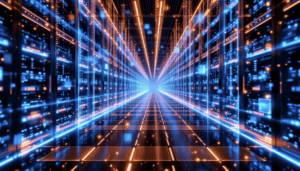Microgrids have proven their role in enhancing the reliability, resilience, and sustainability of the modern power system. Microgrids, either operating independently or in conjunction with the main power grid, can provide continuous electricity during outages, which is why hospitals and other critical cafe and emergency facilities have embraced the technology.
Data centers, always looking for reliable sources of energy, are looking at microgrids to provide much-needed power. The systems support the integration of renewable energy resources such as solar and wind, and they also can provide electricity to remote or underserved areas.

Kirk Edelman, CEO of SolMicroGrid, a developer and operator of solar-enabled microgrid systems, providing “energy as a service” to commercial and industrial customers, provided POWER with several lists detailing the technologies behind microgrids, the companies that can benefit from deployment, and the services the systems can provide for their end-users.
POWER: What are some of the key features that support the functionality of microgrids?
Edelman: Microgrids incorporate a suite of advanced technologies designed to ensure operational resilience, energy efficiency, and grid independence. Key components include:
- Distributed Energy Resources (DERs): Integration of renewable (e.g., solar, wind) and non-renewable (e.g., natural gas generators) sources to diversify supply and enhance reliability.
- Energy Storage Systems (ESS): Battery technologies—typically lithium-ion — store excess energy for later use, providing backup power and enabling load shifting and demand shaving.
- Photovoltaic (PV) Solar Arrays: Rooftop, ground-mounted, or canopy systems generate clean electricity on-site, directly reducing grid dependency.
- Smart Controllers and Energy Management Systems (EMS): Centralized platforms that monitor, control, and optimize DER performance, energy flow, and consumption based on real-time data.
- Inverters: Power electronics that convert direct current (DC) from solar arrays to alternating current (AC) suitable for facility use.
- Backup Generators: Typically powered by diesel, natural gas, or propane, these provide additional resilience during extended outages or when other sources are unavailable.
- Fuel Cells: An emerging alternative to generators and batteries, fuel cells can provide zero-emission backup power using hydrogen or other fuels.
- Islanding Capability: Enables the microgrid to disconnect and operate independently from the utility grid during outages, maintaining continuous power for critical operations.
- Automated Demand Response (ADR): Allows the system to dynamically reduce energy loads in response to utility signals or market conditions.
- Grid Interconnection: Facilitates seamless connection with the utility grid for energy import/export and supports ancillary services such as frequency regulation and voltage support.
POWER: What are some of the best technologies to incorporate into the design of a microgrid?
Edelman: An optimized microgrid integrates a combination of high-efficiency, scalable, and intelligent technologies, including:
- Solar Photovoltaic (PV): A primary renewable resource for on-site generation, providing long-term cost savings and sustainability benefits.
- Advanced Energy Storage Systems: Lithium-ion batteries are the most commonly used due to their high energy density and declining costs; flow batteries offer longer discharge durations and improved lifecycle economics.
- AI-Enabled Energy Management Systems (EMS): These systems forecast energy demand, optimize DER dispatch, and manage energy transactions with the grid or market operators.
- Smart Inverters and Power Electronics: Ensure seamless grid synchronization, improve power quality, and facilitate real-time control of DERs.
- Backup Generation: Low-emission dispatchable assets, such as propane or natural gas generators, enhance reliability during peak demand or grid outages.
- EV Charging Infrastructure: Supports electrification goals and can be integrated into load profiles for dynamic load balancing and demand-side optimization.
POWER: What groups should look into investing in microgrids to support their operations?
Edelman: Microgrids offer a compelling solution for a wide range of stakeholders seeking resilience, cost savings, and sustainability. Key sectors that benefit include:
- Retail and Grocery Chains: Facilities such as supermarkets and big-box retailers require constant refrigeration and lighting. Microgrids ensure energy resilience, reduce spoilage, and stabilize energy costs. Their large rooftops and parking lots are ideal for solar PV installations.
- Military Installations: Require mission-critical energy reliability and resilience. Microgrids provide islanding capabilities and energy security during grid disruptions or cyber threats.
- Industrial and Manufacturing Facilities: These operations face high peak demand charges and risk from downtime. Microgrids reduce operating costs and improve reliability through on-site generation and storage.
- Data Centers: Given their need for uninterrupted power and high energy usage, microgrids offer a pathway to redundancy and improved power quality.
- Hospitals and Critical Infrastructure: Ensures life-saving equipment and essential services remain operational during outages, supplementing or replacing traditional backup systems.
- Remote or Islanded Communities: Where traditional grid infrastructure is weak or cost-prohibitive, microgrids deliver a sustainable and reliable alternative.
- Educational and Corporate Campuses: Microgrids support sustainability goals, reduce operational costs, and offer valuable teaching and research opportunities related to clean energy.
POWER: Can microgrids serve as a load-balancing mechanism for the larger power grid?
Edelman: Yes, microgrids play a vital role in modern grid management by acting as decentralized load-balancing assets. Their localized generation and storage capabilities allow them to:
- Alleviate stress on the main grid during peak periods by shifting or curtailing loads.
- Smooth voltage and frequency fluctuations, enhancing grid stability.
- Provide demand response, ancillary services, and flexibility to grid operators.
- Act as “virtual power plants” when aggregated, helping utilities manage distributed resources more efficiently.
POWER: How can microgrids help reduce energy costs?
Edelman: Microgrids reduce energy costs through multiple strategies:
- Peak Shaving: By discharging stored energy during periods of high demand, microgrids avoid costly demand charges.
- Energy Arbitrage: Stores energy during low-cost periods and uses or exports it during high-rate periods.
- Reduced Utility Dependency: On-site generation reduces the need for grid-supplied electricity, reducing the impact to utility rate hikes.
- Efficiency Gains: Smart EMS platforms ensure optimal DER utilization, reducing wasted energy and improving system economics.
- Renewable Integration: Eliminates or reduces fossil fuel use, decreasing fuel procurement costs and carbon compliance expenses.
POWER: Do you have a case study of a successful microgrid project?
Edelman: In Oceanside, California, SolMicroGrid recently deployed a turnkey microgrid solution at a Chick-fil-A location. It delivers cost savings and sustainability without requiring upfront capital investment from the end user. The system includes:
Technology Components:
- JA Solar PV modules mounted on IronRidge racking.
- 50-kW Chint inverters.
- Fortress Power eSpire Mini battery (30 kW / 81 kWh) for energy storage.
- Fortress Keystone Energy Management System for intelligent control and optimization.
Performance Outcomes:
- Projected 32% reduction in annual electricity purchased from the grid.
- Avoidance of about 160 metric tons of CO2 annually—the equivalent of removing 38 gasoline-powered vehicles from service.
This installation exemplifies how tailored microgrid deployments can simultaneously enhance sustainability and reduce operating expenses for commercial clients.
—Darrell Proctor is a senior editor for POWER.










